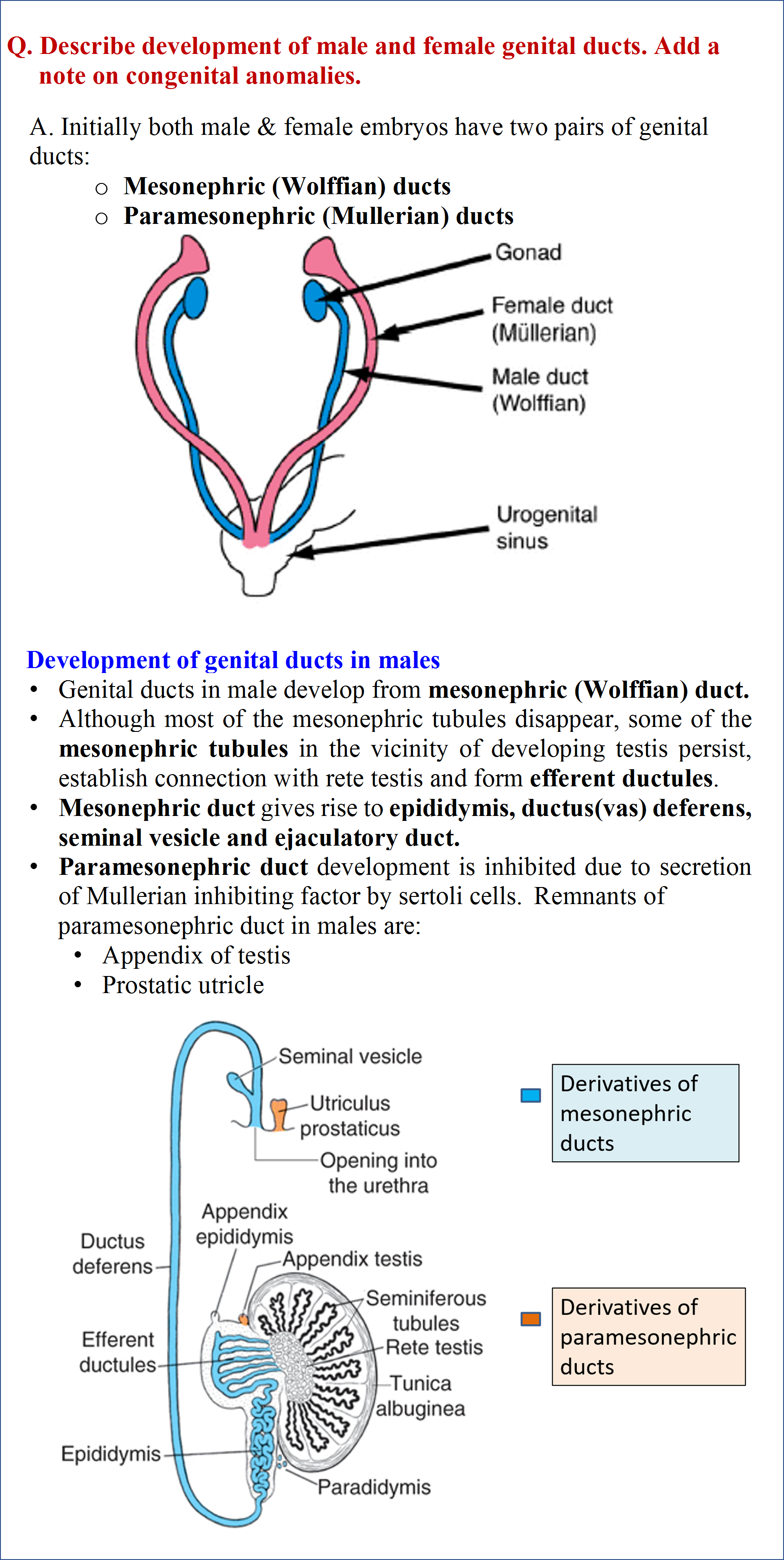Advertisements
Learning Objectives
After reading this post you will know
- The source of primordial germ cells and how they migrate to gonadal ridges.
- The development of ovaries and testes ( the indifferent and definitive stages.
- The embryonic sources from which gonads develop.
- Role of SRY gene in differentiation of testes.
- Origin of different cells of testis and their function.
- Descent of testis and factors responsible for it.
- Names of the primitive genital ducts.
- Development of genital ducts in males (efferent ductules, epididymis, vas deferens, seminal vesicles and ejaculatory ducts)
- Development of genital ducts in females ( uterine tubes, uterus and vagina).
- Congenital anomalies.
Introduction
The genital system consists of
- Pair of gonads
- Males-testes
- Females -ovaries
- Duct system of gonads to carry the germ cells
- Males – efferent ductules, epididymis, ductus deferens, ejaculatory ducts.
- Females- uterine tubes, uterus, vagina.
- External genitalia
Development of Gonads (Indifferent Stage) and Development of Testes

Development of Ovaries

Descent of Testes and Ovaries

Congenital Anomalies of Testes

Development of Genital Ducts In Males

Development of genital Ducts in Females

Derivatives of Mesonephric Tubules, Mesonephric Ducts and Paramesonephric Ducts in Males and Females

Congenital Anomalies of Uterus


This really does help alot💯
Thanks for your wonderful works.